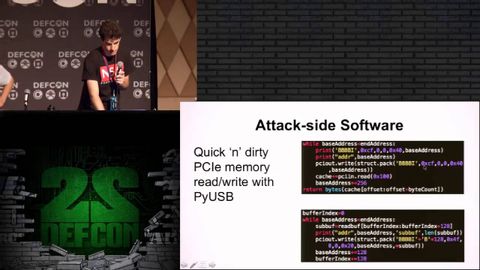
Subtitles & vocabulary
DEF CON 22 - Joe FitzPatrick and Miles Crabill - NSA Playset: PCIe
00
Griffin posted on 2015/08/13Save
Video vocabulary
stuff
US /stʌf/
・
UK /stʌf/
- Uncountable Noun
- Generic description for things, materials, objects
- Transitive Verb
- To push material inside something, with force
B1
More basically
US /ˈbesɪkəli,-kli/
・
UK /ˈbeɪsɪkli/
- Adverb
- Used before you explain something simply, clearly
- In essence; when you consider the most important aspects of something.
A2
More board
US /bɔrd, bord/
・
UK /bɔ:d/
- Noun (Countable/Uncountable)
- Surface for posting or showing information
- Group of persons who direct an organization
- Verb (Transitive/Intransitive)
- To enter a ship, plane, or other vehicle
- To pay money to live in someone's house; lodge
A1TOEIC
More express
US /ɪkˈsprɛs/
・
UK /ɪk'spres/
- Transitive Verb
- To send something by fast mail
- To state or show what you think or how you feel
- Adjective
- Sent by a fast mail service
- Traveling at high speed
A1TOEIC
More Use Energy
Unlock All Vocabulary
Unlock pronunciation, explanations, and filters
